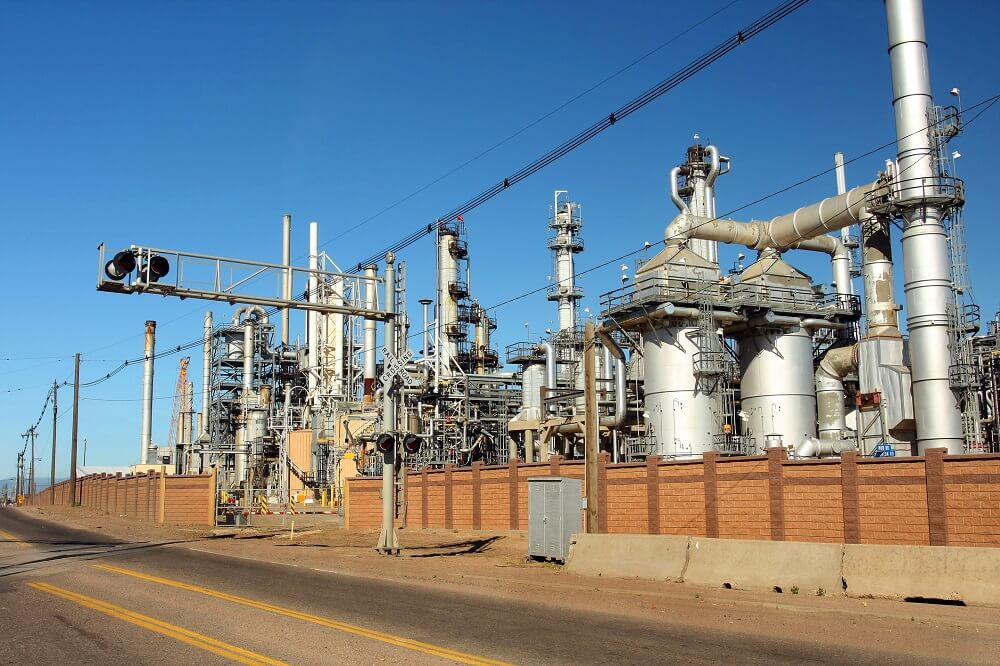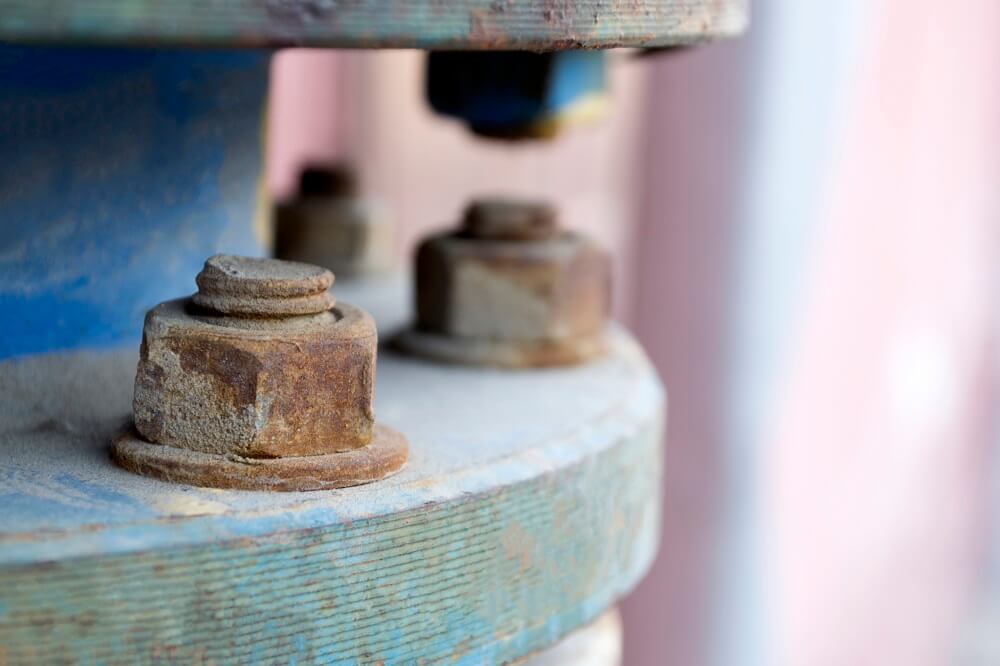Liquid materials can present a threat to the soil, groundwater and surface water if accidentally spilled or leaked from the tanks where such materials are contained. These substances must be stored in such a way that if a spill or leak occurs, the material remains contained and does not contaminate the surrounding environment.Secondary containmentareas are designed for such a purpose.
Environmental Protection Regulations
Historically, very few factory-fabricatedaboveground storage tankswere built with secondary containment as an integral part of the tank. This approach has dramatically changed. Nowadays, newly built storage tanks are typically fabricated with integral secondary containment. Existing tanks built without containment are being revamped to comply with environmental protection regulations.1
The U.S. Environmental Protection Agency code 40 CFR 264.193 “Containment and detection of releases” provides guidance on preventing the release of hazardous waste orhazardous constituentsto the environment by installing secondary containment for all new and existing tank systems or components prior to service. The regulation also applies to tank systems that store or treat materials that become hazardous waste.
The code states that secondary containment areas must be designed, installed and operated to prevent any migration of wastes or accumulated liquid into the soil, groundwater or surface water at any time during operation of the tank. This implies that the collected materials shall be properly removed from the secondary containment area within 24 hours, or in as timely a manner as possible.2
It further states that secondary containment for tanks shall include at least one of the following devices:
- Anexternal liningorcoating system
- An open-top or enclosed vault
- A double-walled tank
- An equivalent device approved by the regional environmental protection agency
Hence, tanks can be double-wall fabricated or single-walled with open-top steel, concrete, compacted clay, or earthen dikes or vaults. A great number of asset owners opt for integrated secondary containment modules consisting of single-wall fabricated tank in concrete dikes coated withprotective coatings. This alternative seems to be preferred above the rest and will be the focus of this article. (For more on this topic, seeBest Practices in Installing Process Vessel Lining Systems.)
Expected Damage During Spillage
To prevent damage to the concrete from leakedcorrosivechemicals, protective coatings are often used. External coatings selected for secondary containment dike concrete surfaces must be able to:
- Properly adhere to theconcrete substrate
- Contain 100% of the capacity of the largest tank within the boundary of the secondary containment area
- Be chemically resistant to the stored chemical so that migration into the environment is prevented
 Figure 1. Secondary containment protected against 98% sulfuric acid at UK power plant.
Figure 1. Secondary containment protected against 98% sulfuric acid at UK power plant.
If external coatings are not employed and the dike concrete surfaces are exposed to chemicals in the event of a spillage, damage could be expected—including, but not limited to the outcomes presented in Table 1.
Table 1: Concrete Exposed to Chemicals
| DAMAGE |
CONSEQUENCES |
| Increase of concrete porosity |
Concrete is porous and generally not impervious to water or any other aqueous chemical. An increase in itsporosityleads to deeper penetration of such chemicals. |
| Corrosion of rebar |
This applies to the steel reinforcing bars used to strengthen concrete.Steel rebar corrosionis a well-documented phenomenon. If steel is not protected, it is exposed to variouselectrolytes. Such reactions inducedeteriorationand the steel substrate can suffer from metal loss or actual failure. Furthermore, allcorrosion byproductsoccupy a greater volume than that of the steel from which they come, and thus can exert additional pressure onto the surrounding concrete. If severe enough, this pressure can overcome thecohesivestrength of the concrete, causing it to crack and eventually fail. |
| Concrete wall cracking |
Cracks in concrete walls occur frequently, often in spite of any precautionary measures. Probably the most common reason for premature concrete cracking is plasticshrinkage. Concrete shrinks before hardening, creatingstressthat is in turn relieved by cracking. (Learn more about stress and cracking inThe Effects of Stress Concentration on Crack Propagation.) Thermal expansion also leads to cracking. Cracking can be avoided by properly placing and spacing crack control andexpansion joints. However, if a crack occurs, it can grow in length and depth, affecting the monolithic character of the concrete wall and exacerbating ingress of chemicals. |
| Chemical attack to the bases of tanks and pumps |
Chemical breakdown can cause a reduction in thecompressive strengthof the concrete, which can then collapse under the weight of the tank and/or equipment contained within. |
| Chemical attack to joint edges and seals |
Joint edges used to absorb movement due to thermally induced expansion and contraction can be damaged by exposure to chemicals in the event of a spillage. Pipe penetrations through the dike walls are typically sealed to avoid egress of chemicals. Thesealantused for such a purpose shall also be chemically resistant to the stored chemicals. If not, seals might bechemically attacked, allowing discharges to escape before cleanup occurs. |
| Chemical attack to dike drains |
Dike drains are typically located at topographic low points of the containment floor. If the drains are chemically attacked by the spilled chemicals, they might need to be re-sloped. This, of course, implies higher maintenance costs. |
The implications of a spill extend far beyond the monetary value of the fluids being spilled. These outcomes include operational shutdowns and environmental impacts with potentially disastrous consequences. For these reasons, it is paramount that asset owners and operators take a preventive approach and proactively maintain their assets, thus preventing catastrophic failures.
Polymeric Technologies – 100% Solids Epoxies
As previously explained, concrete used for secondary containment could be protected with a liquid-applied coating to protect it from accidental spillage. There are various coating technologies available for this purpose, includingpolyurethanesandepoxiesamong others. Epoxies arepolymeric materialsthat result from the chemical reaction of an organicepoxidegroup with a wide range of co-reactants to yield polymers of variable chain lengths.3
By combining differentpolymerizationchemistries and achieving three-dimensionalcrosslinking, epoxies can attain outstanding properties that make them highly versatile and attractive for asset owners. Some of these properties include high mechanical adhesion and strength, corrosion and erosion resistance, and chemical resilience to acids, alkalis and solvents.
 Figure 2. Refurbishment after a sodium hydroxide leak and coating failure at an oil refinery in Brazil.
Figure 2. Refurbishment after a sodium hydroxide leak and coating failure at an oil refinery in Brazil.
Epoxy systems can be solvent-based, water-based or 100% solids.Solvent-based coatings问题是由于不一致的高volatile organic compounds (VOCs), whereas 100% solids epoxy systems are gaining usage due to compliance with environmental and confined spaces regulations.
Some other benefits of 100% solids epoxy polymeric systems include the following.4
- Very low shrinkage during polymerization:In non-solvented epoxy systems, thecuringprocess relies on cross linking in a purelythermosetprocess. Thus, the film thickness of the material remains almost identical before and after curing.
- Very low odor:Generally speaking, solvents have a distinctive and penetrating odor. The lack of solvents renders 100% solids epoxies almost odorless.
- Fewer coats to achieve desired thickness:As 100% solids epoxies do not shrink during the cure process, fewer coats are required to achieve a specificfilm thicknesswhen compared to solvented systems. For instance, a 50% solids epoxy coating requires two coats of 24 mils to achieve a total dry film thickness of 24 mils. As a result, more labor is required.
- Quick return to service:Typically 100% solids epoxy systems cure throughexothermic reactions. The amount of heat generated by the chemical reaction influences the drying times. Quick curing means faster return to service, a definite plus for asset owners.
- Better mechanical properties:100% solids epoxy systems show greater mechanical properties when compared to solvented formulations. Experimental work has shown that solvent remaining within the epoxy can hinder the cross-linking process, resulting in lower exotherm, initial curing rate, reaction order and glass transition temperature values.
Repair and Coating Scenario
在一些实例中,二级containment area requires rebuilding prior to coating. This is probably the case of a storage tank that was fabricated and placed in an unprotected (uncoated) wall dike. The dike wall could have been exposed to chemical contamination or accidental damage, rendering it unstable and structurally unsound. It could also be due to intrinsic defects within the concrete. In either case, it is advisable to use thixotropic paste grade epoxy screeds for reconstruction purposes.
Thicker paste grade epoxy screeds are applied as a levelling layer onto floors or othercementitioussurfaces, and whose consistency resembles that of a molten rock. These screeds usually consist of a polymer with added mineralaggregatefillers. The amount of aggregate can be selected depending on the expected final consistency of the system. Paste grade epoxy screeds are often used in cases where the substrate of the secondary containment area is already damaged and rebuilding is required prior to coating.
Once the substrate is rebuilt with paste grade epoxy screeds, the protective coating can be applied on top. A comparison between paste grade epoxy screeds and coatings for secondary containment protection is presented in Table 2.
Table 2: Materials Comparison
| EXPOXY PASTE GRADE SCREEDS |
EPOXY COATINGS |
| Thicker materials |
Generally up to 40 mil |
| Application by brush and/or trowel |
Application by brush and/orairless spray |
| Typically overcoated by fluid grade materials |
Typically overcoated by fluid grade materials |
| Used for rebuilding or pit filling |
Designed with additives forsagresistance, flow control, air release, etc. |
| Typically used for existing containment areas |
Used for coating purposes. Typically used for both existing and newly fabricated containment areas |
As previously stated, for epoxy coatings to effectively protect secondary containment concrete, they should be able to properly adhere to thesubstrateand be chemically resistant to the stored chemical.
Testing Coating Adhesion and Chemical Resistance
Adhesionto concrete andchemical resistanceof epoxy materials can be assessed viadolly pull-off adhesion testingandchemical immersion testing, respectively.
多莉adhesi拖出一个方法来确定ve strength of a coating material to a properly prepared substrate. The test is carried out in accordance with ASTM D 4541.5. The material to be tested is applied and allowed to cure in agreement with the manufacturer’s instructions for use. Aluminum dollies arebonded在使用强力胶涂层。一个该lic adhesion tester is then employed to pull the dollies at a constant rate perpendicular to the substrate until failure is obtained.

Figure 3. Dolly pull-off adhesion test. Cohesive failure of concrete is evident.
Pull-off adhesion failurewill occur along the weakest plane in either the coating, the aluminum dolly or the substrate itself. Adhesive failure modes can be observed if there is visual evidence of the coating entirelydisbondingfrom the substrate when the dolly is pulled off. (Related reading:Myth or Fact: Higher Surface Profile Increases Coating Adhesion.)
Cohesive failure modes, on the other hand, would be evident if the coating failed within itself. Because concrete itself is weak in tension, it is possible for the substrate to fail cohesively when the dolly is pulled, as shown in the picture above. This would indicate that the adhesion of the coating to the substrate is greater than the cohesive strength of the substrate. In general, the greater the pull-off force applied, the greater theadhesive strengthof the coating material.
The chemical resistance of coatings is assessed by laboratory testing in accordance with ISO 2812-1.6. This standard specifies general methods for determining the resistance of coating materials to the effects of liquids other than water.
Blasted mild steel rods of ½-inch (1.3 cm) diameter and 5-inch (12.7 cm) length are prepared for coating application. This implies that the tips of the rods are rounded to minimize risk of failure due toedge defects. The surface is thenblast cleanedto SSPC SP 10 (near white metal) level of cleanliness with at least 3 mil profile. The rods are coated with thecoating systemto be tested following the manufacturer’s Instruction for Use. The coating is allowed to cure and then immersed in the chemical, at ambient or elevated temperature levels.
 Figure 4. Chemical testing of coated steel rods at ambient and high temperatures.
Figure 4. Chemical testing of coated steel rods at ambient and high temperatures.
The coated rods are periodically reviewed for any sign of damage in the form oferosion,blistering, cracking ordelaminationof the coating. The test is typically run for 52 weeks. Observations coupled with the length of chemical exposure are used to assign a chemical resistance rating. As a result, at least one coating manufacturer has adopted a chemical resistance rating of Poor, Moderate, Good, and Excellent, as quantified in Table 3.
Table 3: Rating System Based on Performance Duration
Rating |
Observations |
Recommendation |
EXCELLENT |
No significant deterioration or damage is observed after testing length greater than 52 weeks |
Suitable for long-term immersion |
GOOD |
No significant deterioration or damage is observed after testing length between 12 and 52 weeks |
Suitable for short-term immersion or contact |
MODERATE |
No significant deterioration or damage is observed after testing length between 1 and 12 weeks |
Suitable for short-term contact such as splashing, spillage or secondary containment |
POOR |
Significant deterioration or damage is observed after testing length of 1 week or less |
Not suitable for any application |
A rating of Moderate or Good is typically observed for coating systems to be employed in secondary containment areas.
Application
Once thefit-for-servicematerials are chosen based on adhesion to concrete and chemical resistance to potential chemicals, the next question is how to successfully deliver the solution. The answer is to execute application in strict accordance with best practices drafted by the materials manufacturer.
下面的一个例子application procedure for protecting a secondary containment area.
- Prior to application:
- New concrete shall be allowed to cure for a minimum of 28 days or until the moisture content is below 6% when measured with a Protimeter.
- The materials to be used shall be in their right amounts, in good condition and transported to the application site in compliance with applicable transport requirements and accompanied withMaterial Safety Data Sheet (MSDS)information.
- The environmental conditions,dew point, ambient temperature and substrate temperature shall be monitored.
- The application area shall be properly identified as per design.
- The surface to be repaired shall be prepared as perNACENo. 6/SSPC-SP 13 “Surface Preparation of Concrete”.
- Application should commence as soon as thesurface preparationactivity has been completed. (You might be interested in the articleIs Surface Preparation for Concrete Repairs a Fad?) In the event that the substrate requires rebuilding, the thickness of the substrate can be rebuilt by using compatible screeding grade materials prior to application of the coating material.
- All materials shall be mixed until a homogeneous mixture is attained.
- Coating material should be applied in two contrasting coats ensuring that targeted film thicknesses per coat are obtained.
- Areas to be repaired, if any, shall be addressed prior to the final cure of the materials.
- All materials shall be allowed to cure for completion of the molecular reaction in accordance with recommended times.
In Summary
Polymeric solvent-free solutions for secondary containment protection are attractive to asset owners worldwide for various reasons. They are not only reliable in service and fast curing, but they can also be applied to both newly fabricated and existing containment areas. These solutions provide peace of mind to asset owners who can rely on a coating system that effectively protects their assets against corrosive chemicals such as sulfuric acid, hydrochloric acid and sodium hypochlorite among others.
***
Consulted Literature:
- McKetta, John, “Encyclopedia of Chemical Processing and Design”, Marcel Dekker, Inc. 1996.
- Code of Federal Regulations 40 – Part 264.
- Ebewele O. Robert, “Polymer Science and Technology”, Library of Congress Cataloging-in-Publication Data, 2000.
- Pascault, Jean-Pierre et al., “Thermosetting Polymers”, Marcel Dekker, Inc., 2002.
- ASTM D4541 “Standard Test Method for Pull-Off Strength of Coatings Using Portable Adhesion Testers”.
- ISO 2812-1 “Paints and varnishes – Determination of resistance to liquids – Part 1: Immersion in liquids other than water”.










